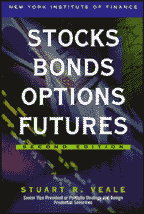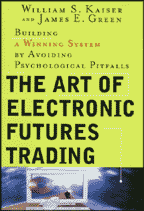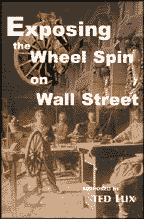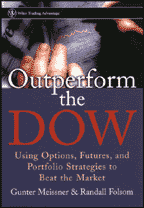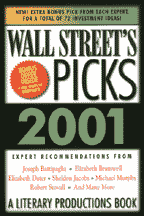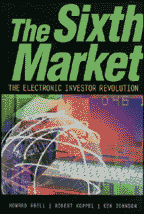 |
 The Sixth Market: The
Electronic Investor Revolution (224 pages, $26 hardcover, 2000, ISBN
0793139139), by Howard Abell, Robert Koppel, and Ken Johnson,
published by Dearborn Trade, a Kaplan Professional Company. According to
some estimates, from 1992 through 1998, 80% of people who engaged in daytrading
lost money. The runup in stock prices, particularly in the technology sector,
had masked a serious weakness in the premise of self-directed online trading:
most people didn't really know how to trade. With the emergence of self-directed,
electronic trading comes a need for training. Trading skills can be learned
and are not difficult to master, according to these authors. Here, you'll
learn the steps essential to competing in today's electronic marketplace.
Dearborn Trade The Sixth Market: The
Electronic Investor Revolution (224 pages, $26 hardcover, 2000, ISBN
0793139139), by Howard Abell, Robert Koppel, and Ken Johnson,
published by Dearborn Trade, a Kaplan Professional Company. According to
some estimates, from 1992 through 1998, 80% of people who engaged in daytrading
lost money. The runup in stock prices, particularly in the technology sector,
had masked a serious weakness in the premise of self-directed online trading:
most people didn't really know how to trade. With the emergence of self-directed,
electronic trading comes a need for training. Trading skills can be learned
and are not difficult to master, according to these authors. Here, you'll
learn the steps essential to competing in today's electronic marketplace.
Dearborn Trade
A Kaplan Professional Company
155 N. Wacker Drive
Chicago, IL 60606-1719
US orders: 800 829-7934
international orders: Dallas French, 312 836-4400
fax 312 836-1021
www.dearborn.com
BACK TO LIST |


